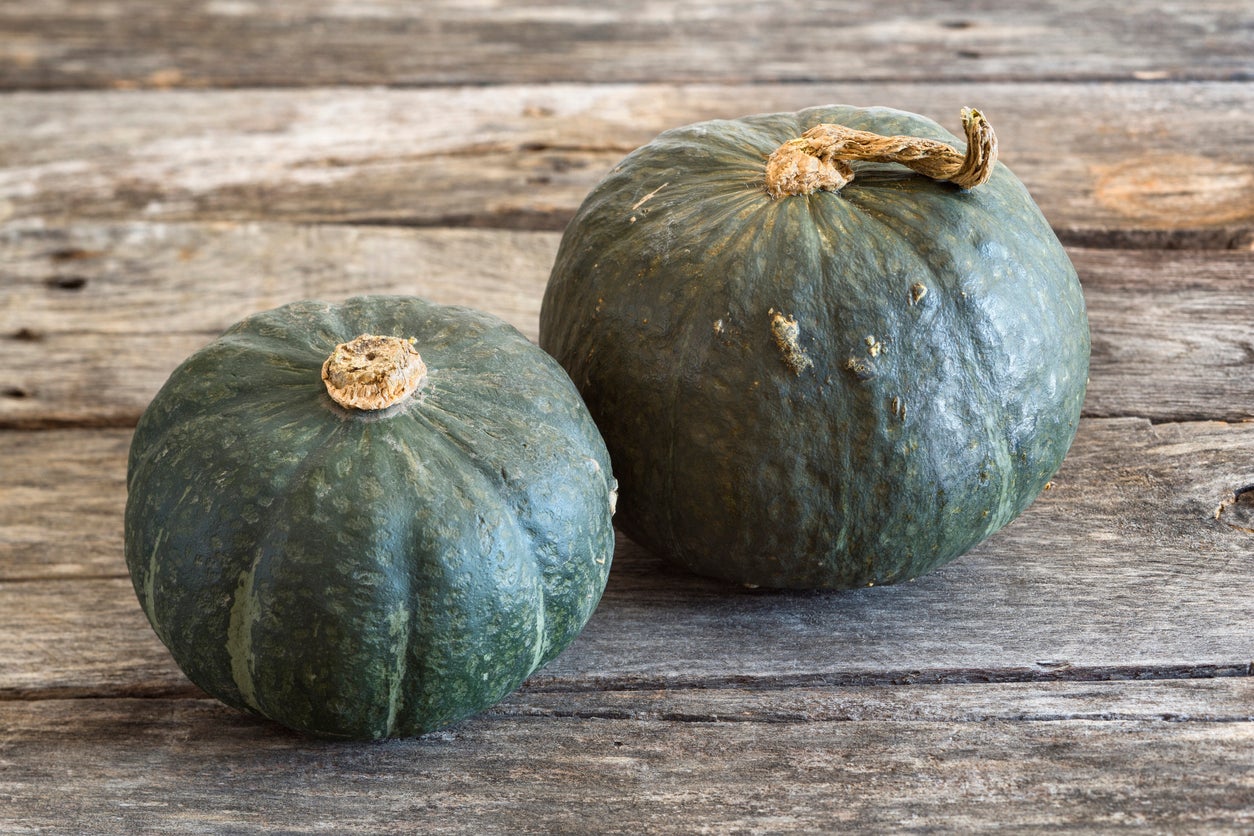Buttercup Squash Facts – Learn How To Grow Buttercup Squash Vines


Buttercup squash plants (Cucurbita maxima) are heirlooms native to the Western Hemisphere. They are a type of kabocha winter squash, also known as Japanese pumpkin, and can be stored for a long time due to their hard rinds. As the name would suggest, the flesh cooks up with a sweet buttery flavor. Buttercup winter squash needs a long growing season and plenty of sun and heat to produce the small fruits that thrive in USDA hardiness zones 3-11.
Buttercup Squash Facts
Heirloom plants are all the rage today. They allow gardeners to explore food varieties that our grandparents grew and that have time-tested reliability. Buttercup squash facts indicate that the heirloom variety often develops turban-shaped fruit, an eye-appealing oddity. The fruit is an excellent source of carotenoids, an important antioxidant, and Vitamin C.
The plant needs 105 days from seed to harvest. It is a sprawling, vine-like plant that requires plenty of room to grow. The fruits are small compared to many winter squash plants. Weighing in at 3 to 5 pounds (1.35-2.27 kg.), the skin is deep green with no ribs. Sometimes, they are globe shaped but, occasionally, the fruit develops a button-like gray growth at the stem end.
This type of fruit is known as turban squash, a development that doesn't change the taste of the fruit. The flesh is a sunny orange without strings and has a deep, rich flavor. It is tasty broiled, grilled, fried, roasted, or boiled.
How to Grow Buttercup Squash
Squash plants need well-draining, deeply fertile soil in full sun. Incorporate compost, leaf litter or other organic amendments prior to planting.
Start seeds indoors 8 weeks before planting out, or direct sow once all danger of frost has passed. Buttercup winter squash grown indoors will need to be hardened off before transplant.
Transplant when they have two pairs of true leaves. Space plants or seed 6 feet (1.8 m.) apart. If necessary, thin plants to one per recommended spacing. Keep young squash moderately moist and use an organic mulch around the root zone to prevent weeds and conserve moisture.
Sign up for the Gardening Know How newsletter today and receive a free copy of our e-book "How to Grow Delicious Tomatoes".
Care of Buttercup Squash Plants
Provide 1 to 2 inches (2.5-5 cm.) of water per week. Deliver water from under the leaves to prevent diseases like powdery mildew from forming.
Watch for pests and combat them by hand picking larger types and using an organic pest control for smaller insects, like aphids. Many insects dine on squash such as vine borers, squash bugs and cucumber beetles.
Harvest fruits when the rind is shiny and deeply green. Store winter squash in a cool, dry, well-ventilated location where no freezing temperatures are expected. Buttercup squashes become sweeter with a few weeks of storage. You can store the fruit for up to four months.

Bonnie Grant is a professional landscaper with a Certification in Urban Gardening. She has been gardening and writing for 15 years. A former professional chef, she has a passion for edible landscaping.